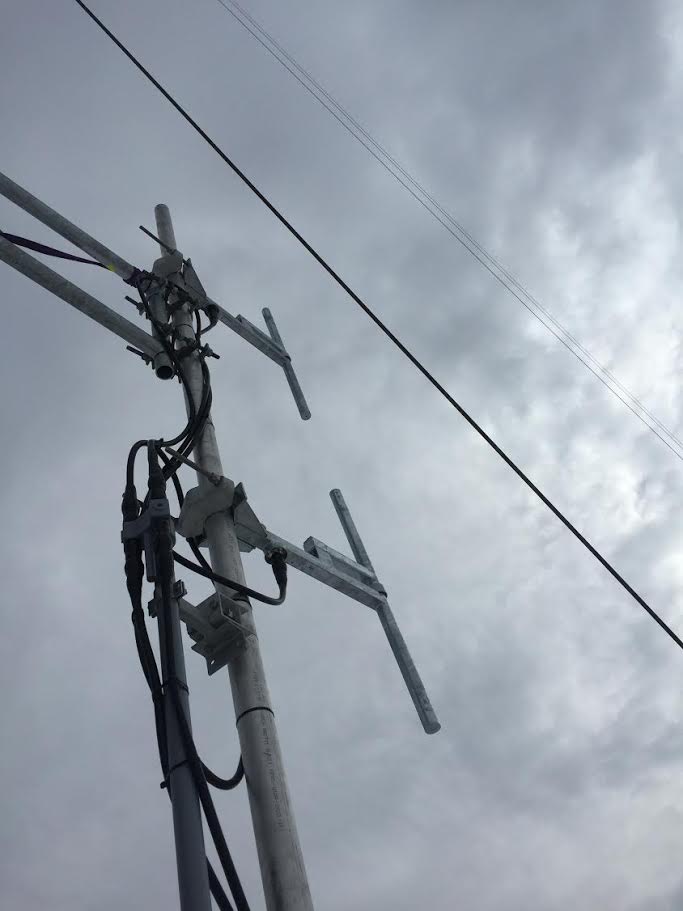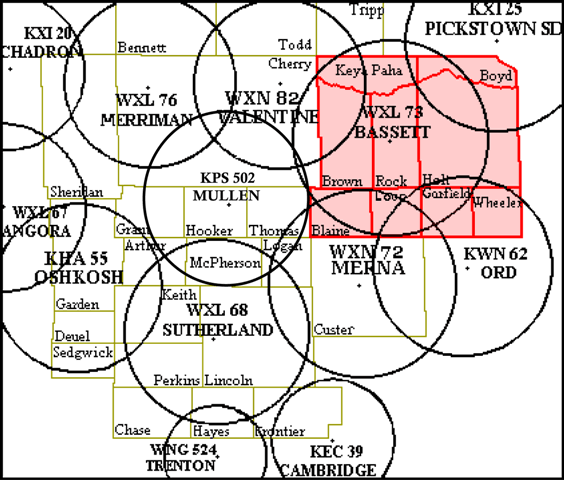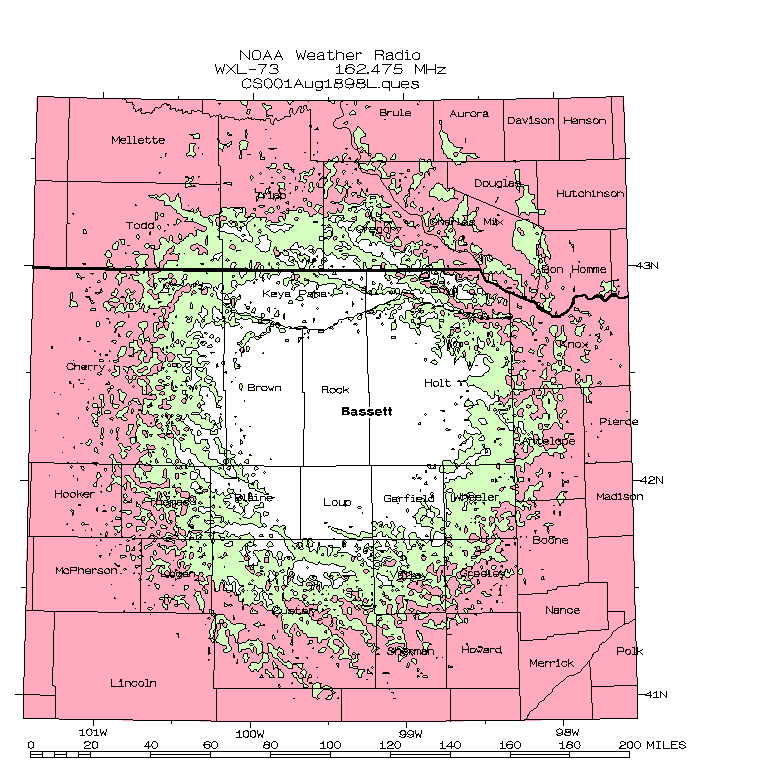
 |
| Picture of damaged antenna at WXL73 January 2017 |
The Bassett NWR was transmitting during the previous outage, but at a lesser power than the full 1000 watts because the damaged antenna was causing some output power to be reflected back into the transmitter. This is known as VSWR (voltage standing wave ratio) standard VSWR is tiny (i.e, 1000 watts out, 1 watt reflected back in). Due to the damage, the Bassett transmitter had a very high VSWR, with 200 watts reflected back in. That kind of activity does not cause further damage but it does make the output sound muffled and it does not travel as far as it used to. That's why people within a few miles of the tower are heard the output, while others did not.

The Bassett NWR normally covers the following areas:
 |
 |
| White is "Most Reliable Coverage", Green is "Possible", Pink is "Unlikely" |
If you rely on this transmitter and can no longer receive a signal, try one of the surrounding transmitter frequencies. Those are:
Valentine: 162.450 megahertz
Ord: 162.525 megahertz
Merna: 162.500 megahertz
Pickstown: 162.425 megahertz
This is a good time to ensure that you have multiple ways to receive our warnings. Make your weather-awareness fail-proof!
 |